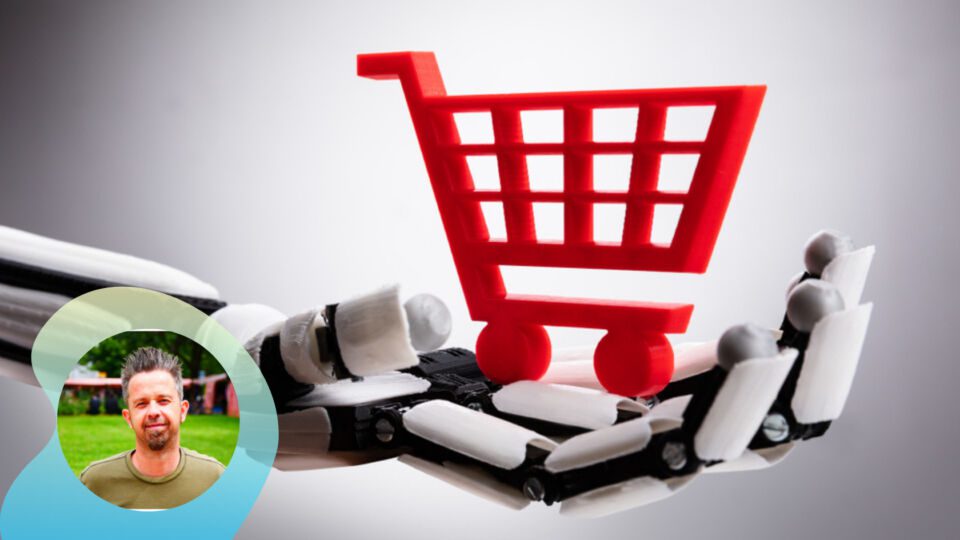In previous years, much of the activity around grocery stores and robotics involved front-of-store processes, where autonomous mobile robots (AMRs) moved up and down aisles to scan inventory levels, clean floors or scan the area for spills. Many of these efforts changed drastically when the COVID-19 pandemic hit, resulting in a surge in customer demand for digital shopping options including delivery, curbside and touchless pickup.
With a post-COVID economy now shaping up thanks to growing vaccination rates, grocery stores are exploring robotics and automation in different areas of the store. Instead of public-facing robots, much of the automation being adopted in grocery stores will be invisible to shoppers.
The shift in where robots will perform automated tasks can be attributed to two things. First, the behaviors adopted during the pandemic around online grocery shopping are likely to remain post-COVID.
In a survey conducted by McKinsey & Company looking to determine which behaviors will stick around post-COVID, e-grocery, virtual healthcare and home nesting were behaviors found most likely to continue. “In e-grocery, those companies with established delivery capabilities and relationships were able to respond to the new environment quickly and effectively, determining the choices consumers had,” writes McKinsey.
Second, initial experiments in deploying robots at the front-of-store, working alongside associates and customers, have been mixed at best. Walmart recently ended its program with Bossa Nova Robotics for inventory-scanning robots at its stores, indicating that associates with scanners could handle the same process better.
Additionally, reports showed that many customers felt uncomfortable around the robots, or worse, decided to interfere or otherwise hinder their tasks. Similar experiences were discovered with customer service robots such as the Pepper robot made by SoftBank Robotics — the company recently decided to pause production of the robots in Europe.
Robots and automation can still be valuable for grocery chains, as witnessed by successes in warehouses and distribution centers to fill ecommerce orders, handle returns and replenishment tasks, and load or unload pallets for further distribution.
One of the leaders in this movement is Kroger, which recently launched its first Customer Fulfillment Center in Monroe, Ohio (north of Cincinnati). The center combines vertical integration, machine learning and robotics to give customers affordable and fast delivery of fresh food. The center is powered by Ocado, which has similar offerings in Europe. Kroger is also exploring grocery delivery via aerial drones, teaming up with Drone Express to deliver groceries. Similarly, Walmart has run pilot programs with drone delivery and autonomous vehicle delivery of online orders.
In Kroger’s automated fulfillment center, more than 1,000 robots move around giant 3D grids, which contain totes with products and ready-to-deliver customer orders. As an order nears a delivery time, the robots retrieve products from the grid and present them at pick stations for sorting and delivery. The orders are then loaded into a temperature-controlled delivery van that can store up to 20 orders. Algorithms also determine optimized delivery routes, considering road conditions and optimizing for fuel efficiency.
Automated retrieval and storage systems (AS/RS), frequently found in larger distribution centers, will likely evolve to smaller grocery stores in a micro-fulfillment setting. In this case, smaller grids and automated robots will be able to fill orders for customers, based on data collected about demographic choices and preferences along with machine-learning-based forecasting.
Norwegian robotics company AutoStore recently announced a partnership with Asian-American specialty grocery chain H Mart to introduce a fully automated micro-fulfillment center in Carlstadt, N.J. The micro-fulfillment center will support the company’s online grocery operations. Having a smaller version of the AS/RS in the back of a store enables retailers to reduce the average distance between a store and its customers, which enables better in-store pickup and rapid home delivery services.
An additional grocery store concept around micro-fulfillment includes deploying robots and automated systems for picking and retrieving center-store grocery items such as cereal, pasta and other boxed items, while allowing customers to still select their own produce, meat, bakery items and dairy products. Similar to warehouse fulfillment, AMRs might also soon be seen in the back-of-store storage area to help associates pick online orders for delivery to an in-store pickup area.
Automation like this is needed as stores continue to face labor shortages, to support both returning customers in-store, as well as the continuance of online shopping orders that are either delivered to a customer’s home or sent to a curbside delivery pickup zone or in-store pickup location. Success in this space will depend a lot on the types of systems being offered and how well they coordinate the robots with existing ordering systems and inventory management within the supply chain.
Florian Pestoni is CEO and Co-founder of InOrbit, a leading cloud-based robot operations platform. InOrbit allows companies operating growing robot fleets to improve efficiency, perform critical monitoring and control tasks remotely. Pestoni brings over 15 years’ experience leading products from startups to public companies including Facebook, Microsoft and Adobe. With hands-on experience in enterprise, SaaS and media products used by hundreds of millions of users, Pestoni shares a compelling vision and applies lean product principles to build and scale technology products and companies.




